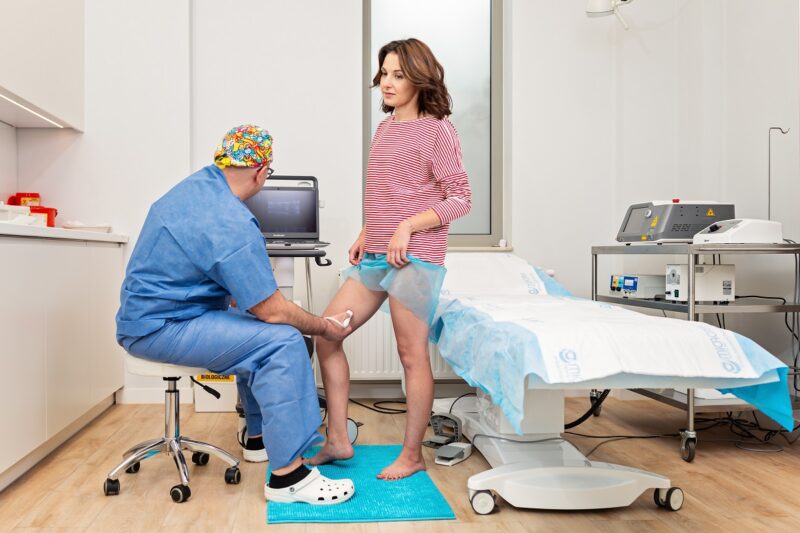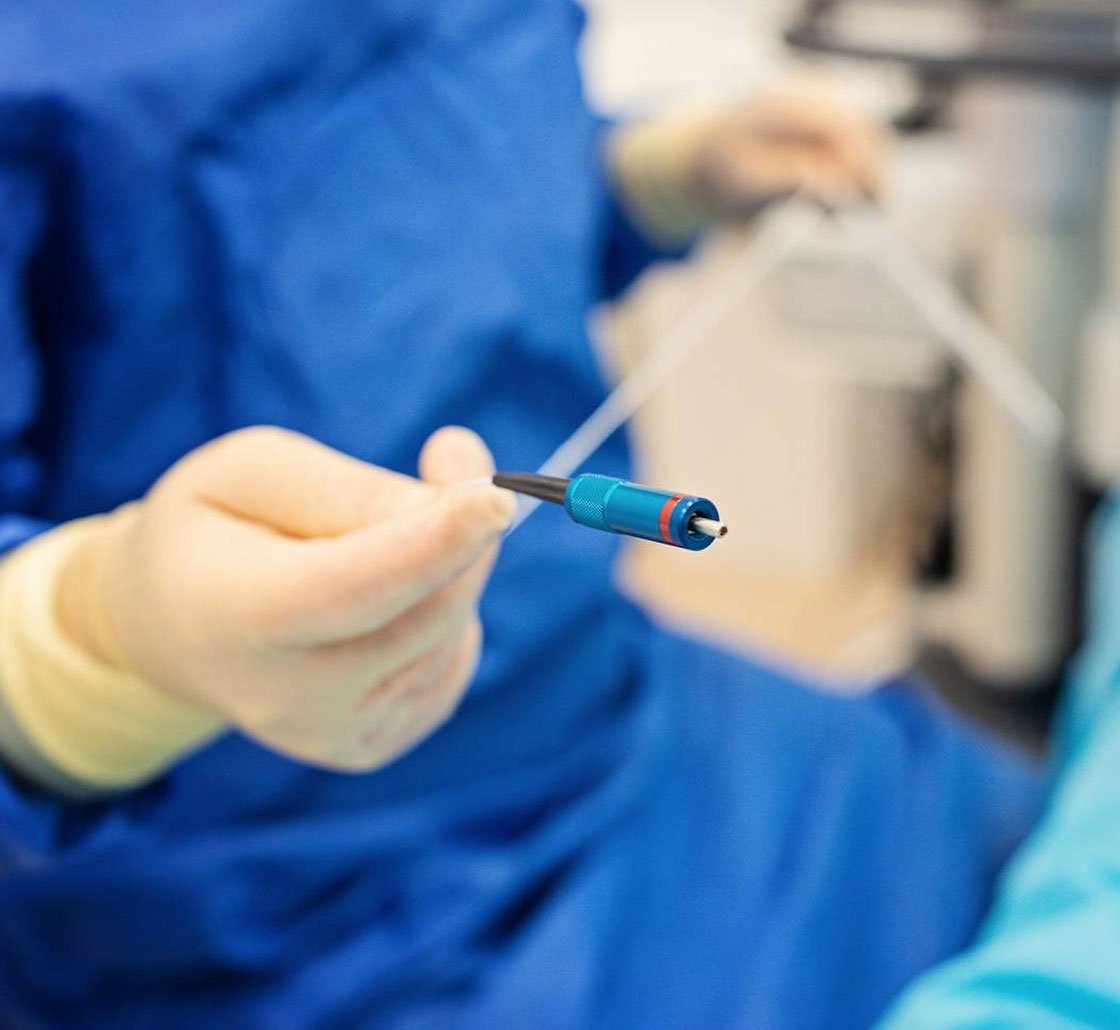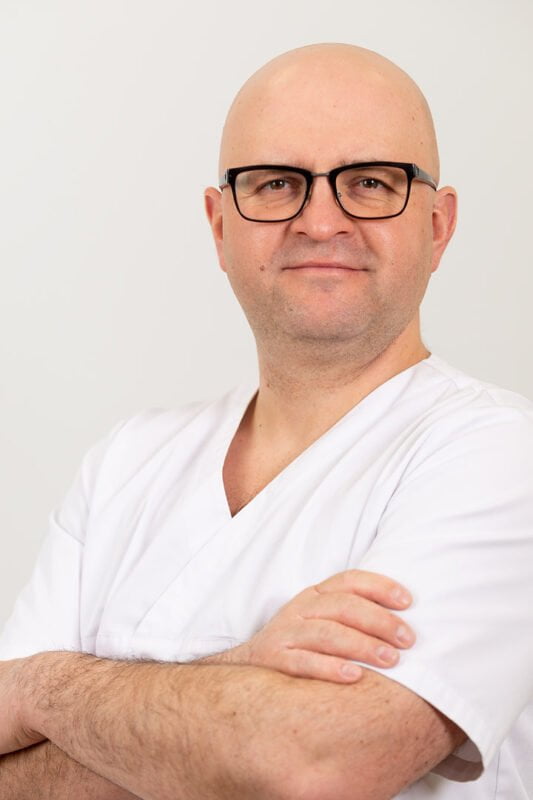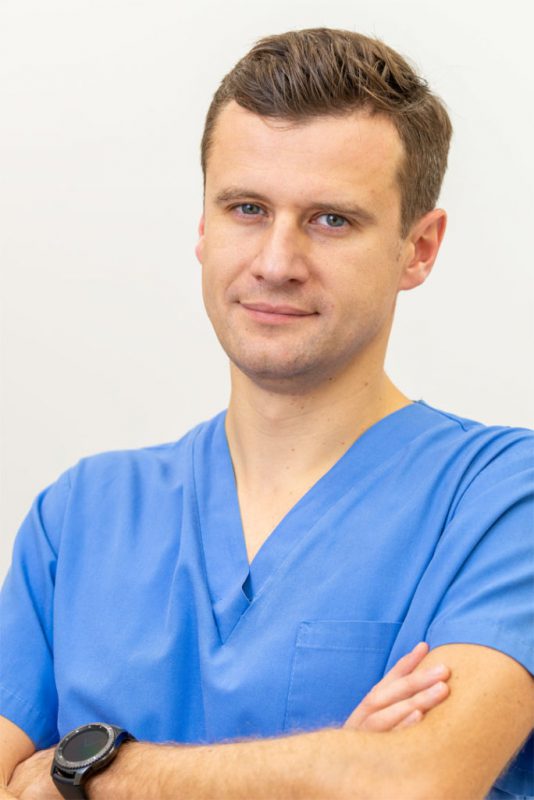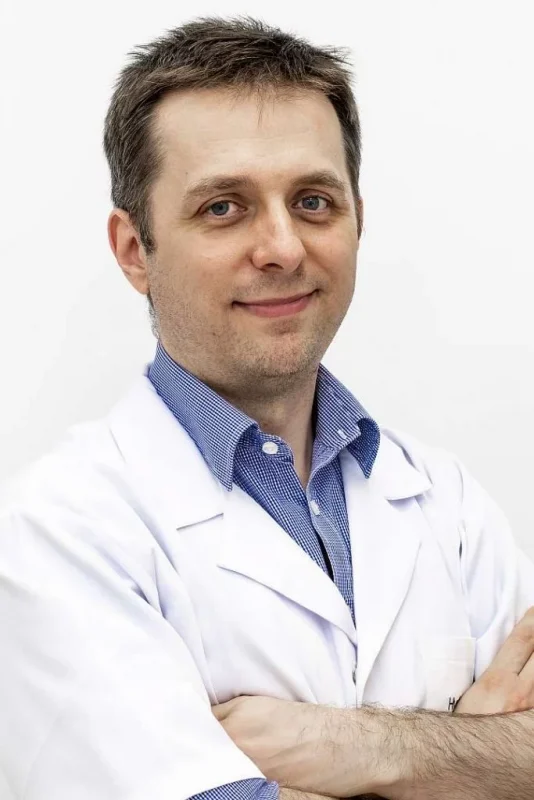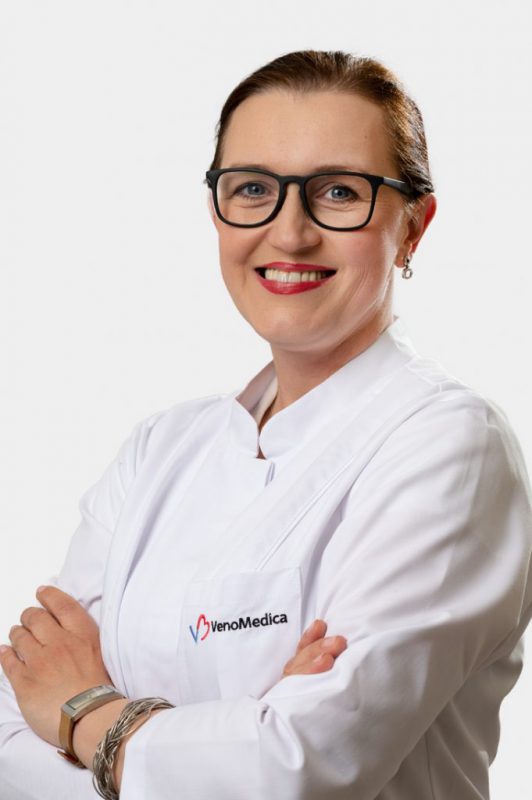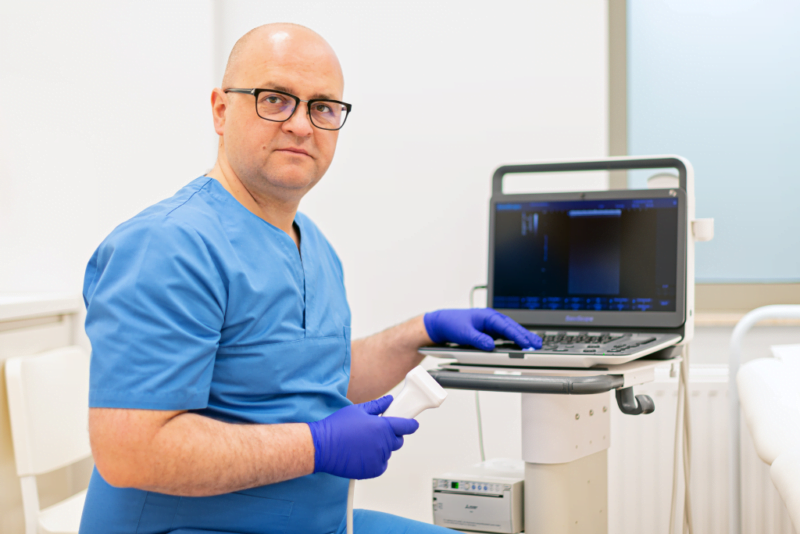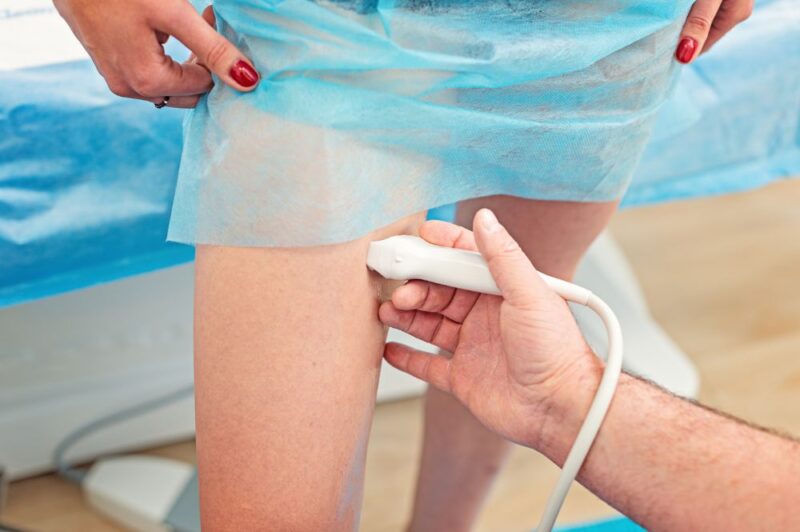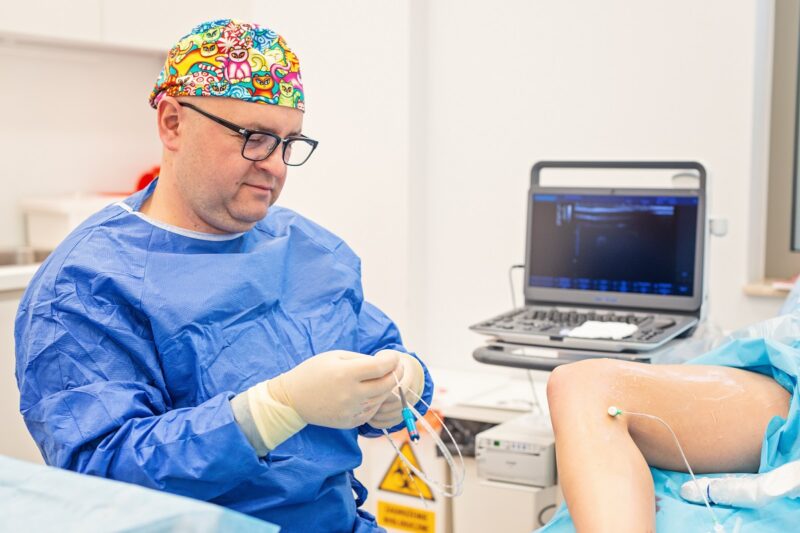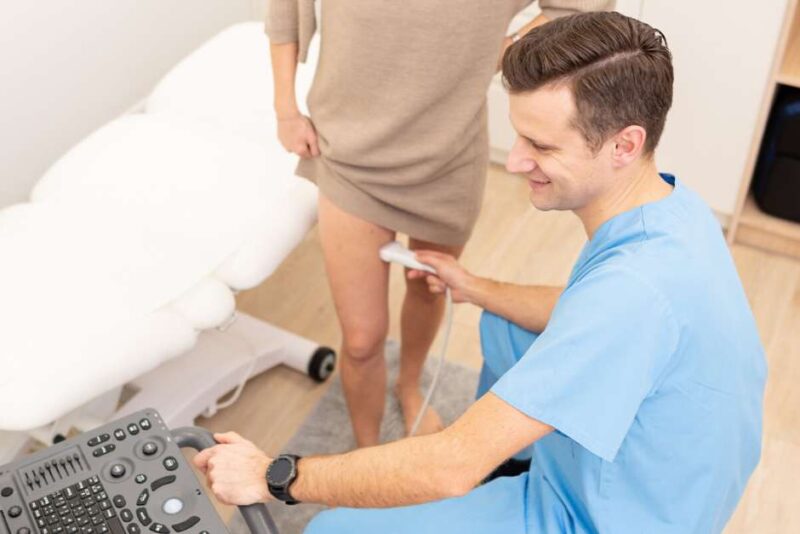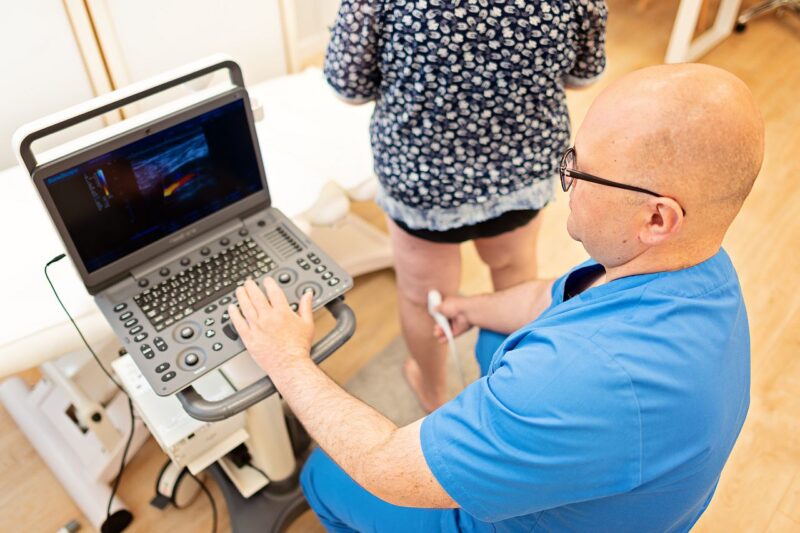Varicose veins are permanent expansions of superficial veins, which are often lumpy, bulging or twisted in appearance. They are often caused by the imbalance of blood pressure in the superficial vein and the endurance of the vein’s walls. The most common cause of varicose veins is the insufficiency of venous valves and inherent or acquired weakness of the vein walls.
Indications and preparing for surgical procedure
Before the EVLT procedure a duplex Doppler ultrasound of the lower limbs must be performed to qualify the patient. The indications for endovenous laser ablation include varicose veins in the legs, valvular incompetence in a superficial vein in the leg (great saphenous vein or small saphenous vein). The choice is also made based on the patient’s age, disease stage, and presence of coexisting diseases.
Before the procedure, blood tests must be performed: complete blood count, APTT and CRP levels, and the patient is required to wear compression stockings (class 1). The procedure is performed under local anesthesia, so the patient can eat and drink even just before the procedure.
The procedure
Mini-phlebectomy is a surgical treatment method for local removal of varicose veins. The procedure is done under local anesthesia. The skin is disinfected and an anesthetic is administered through a skin puncture. Small incisions are made to remove varicose veins with special surgical tools. The incisions are usually small enough that they usually do not require stitches. After the procedure, sterile dressings are placed on the wounds and the patient needs to wear a compression stocking or elastic bandage on the limb. The patient may usually return to normal physical activity right after the procedure.
Recommendations after treatment
- wearing a class 1 compression stocking for 24 hours after the procedure and then during the day for two weeks
- it is not advised to drive a car directly after the treatment
Already the next day the patients are able to return do moderate physical activity (walks, climbing the stairs, work which does not require intense effort). Return to exercise is possible after 2-4 weeks.
